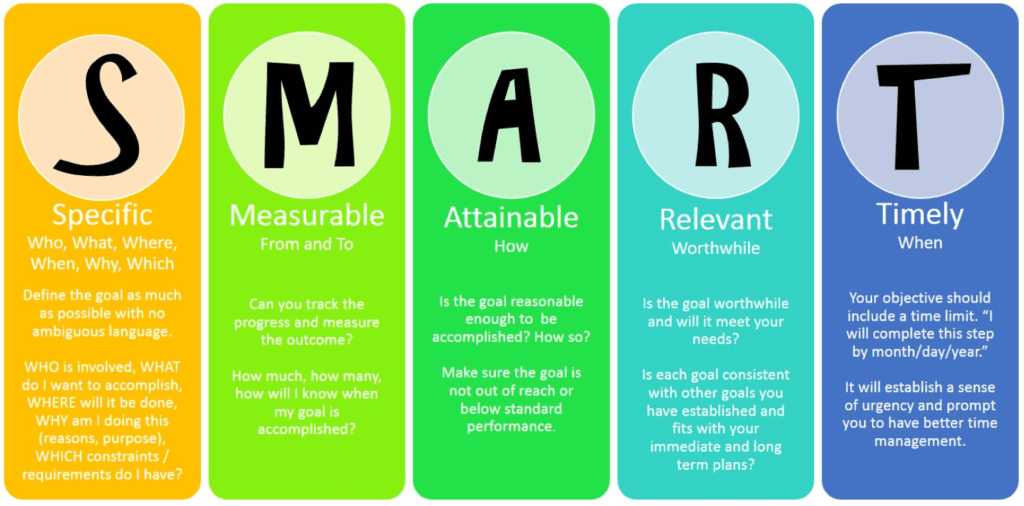Setting webinar goals is a critical step in your planning process. Without goals, you run the risk of creating a webinar that doesn’t achieve much of anything.
Setting webinar goals should come early in your planning, long before you craft your presentation, design your slides, or build your registration landing page.
Goals are important because they give you something to work toward. They give you a target to hit. If you don’t know what you’re aiming at, there’s little chance you’ll hit it. Even if you produce an amazing webinar, you’re unlikely to create meaningful change in your business unless you establish some goals.
In this post, we dive into the process of setting webinar goals.
Start with Your Business Needs
Webinars are tactics, which means they’re tools to achieve something. They have to fit into a bigger plan. So when you start to think about setting webinar goals, it’s important, to begin with your broader business needs.
For instance, let’s say your company makes a majority of its revenue through its email list. Maybe you sell products and courses to your subscribers, work as an affiliate for other brands or products, or serve premium content. Your business objective, therefore, is to grow your email list.
With that objective in mind, your webinar goal is pretty straightforward: Capture more subscribers.
Once you know the goal, you can build a webinar around it. Perhaps you’ll give out specialty content or prizes to people who sign up for your list. Maybe you’ll laud the benefits of subscribing to your email list. Or maybe you’ll present a case study of someone who achieved their goal because of the information they got from your newsletter.
What happens if you don’t consider your business needs? Chances are you’ll create a webinar that doesn’t add any value to your business.
In the case of our example, imagine running a whole webinar without mentioning your email list. No one would subscribe because they don’t know if they could or should. The webinar would be a waste of time because it doesn’t serve the business’ objective.
Characteristics of Good Webinar Goals
“I want to grow my email list” may be a valid goal for your business, but it lacks specificity and focus. It’s a vague objective. So your next step is to turn it into a proper goal.
What does a proper goal look like? It has five parts. You can remember them with the acronym SMART.
Image: newfoundbalance.com
Specific
It’s important to be clear with your webinar goals. If you aren’t specific, you won’t be sure if you actually achieved your goal (or to what degree).
For each goal, consider…
- Why are you setting the goal?
- Who needs to be involved to achieve it?
- What do you want to accomplish? (Be detailed!)
- Are there any deadlines or timeframes to consider?
- What obstacles or challenges will you come across?
Measurable
Measurability gives you a way to evaluate the performance of a goal. If you can’t measure it, you’ll struggle to determine if you achieved it.
For example, “I want to give my webinar guests an enjoyable experience” is a goal, but it’s not measurable. How would you know if people found the goal enjoyable?
The trick is to attach a metric to your webinar goals. You might measure how much people enjoyed your webinar by giving them a survey at the end and asking them to rate their enjoyment on a scale of one through ten.
Your goal, therefore, would be better stated like this: “I want my webinar guests to rate their enjoyment at an average of eight.” This gives you a lot more information. If their scores averaged a seven, you would know you just need a few tweaks to make it enjoyable. But if their scores averaged a three, you would know you have a lot of work to do.
Achievable
Your webinar goals should be realistic and attainable based on your skills and tools. They should stretch your abilities without demanding outrageous results or unavailable techniques.
For example, if you don’t have your own following or know any influencers with followers to leverage, then setting a goal of “registering 500 people” for your first webinar would be ridiculous. There’s no way you would reach that. Similarly, the goal of “attracting 100 people via paid Facebook ads” is impossible if you don’t have a budget to buy ads.
Beware of setting webinar goals you don’t entirely control. It’s hard to “keep the presentation under 45 minutes” if you plan to let someone else speak for half the time.
Relevant
This characteristic of a proper goal answers the question “Does the goal really matter?”
We touched on this earlier when we mentioned your webinar goals should fit into your broader business needs, but the goal should also be relevant within the context of the webinar.
For instance, setting a goal of “Get people to sign up for a product trial” isn’t relevant if the product isn’t available yet. That goal doesn’t serve any purpose.
Furthermore, make sure your webinar goals are relevant to your guests. There’s no sense in trying to get them to like your company’s Facebook page if they’re not part of a demographic that uses Facebook.
Timely
Proper webinar goals need endpoints. Without deadlines, you could technically work on a goal forever. You’d never know if you achieved or failed. You must set some points to evaluate your performance.
Your end points will depend on your specific goal. They could be hard dates or the end of certain activities. If you set a registration goal, the end point is when registration ends. If you set a sales goal, the end point is when you’ve reached out and followed up with each attendee.
Set Some Personal Webinar Goals
It’s a good idea to establish some personal goals for your webinar to help improve your performance as a host. These goals don’t come directly from your business objectives, but over time they’ll make you a better host and help you lead more effective webinars.
What is a personal goal? It’s a goal just for you to improve your presentation.
For instance, let’s say you have a tendency to build your slide deck out of order, which means you end up skipping forwards and backward throughout your presentation. This is confusing for your guests who want a linear story, so your goal is to create an ordered presentation that doesn’t require jumping around.
If that were your personal goal, you would keep it in mind as you created, edited, and practiced your presentation, and make adjustments wherever appropriate.
Here are some more examples of personal webinar goals:
- “I want to avoid using filler words such as ‘like,’ ‘uh,’ and ‘um.’”
- “I want to anticipate my guests’ questions and answer them before they ask.”
- “I want to use more diagrams to explain complex topics.”
- “I want to speak slower and in a more conversational tone.”
Set New Webinar Goals for Each Presentation
Assess your webinar goals at the end of each webinar. Consider whether you achieved each and to what degree.
Don’t be discouraged if you don’t reach your goal. Ask yourself what you can do differently to hit your goal next time. Does your webinar need a few tweaks or a complete overhaul? Even if you made your goal, it’s important to ask how you can do better next time.
But don’t use the same webinar goals for your next webinar. Push yourself to achieve more with each subsequent event. If you hit your goal of “10 sales conversions” this time, set the next goal for 13.
Setting webinar goals is an important part of the planning process. If you neglect this step, you’ll end up with an unfocused webinar that doesn’t achieve any of your broader business needs.




